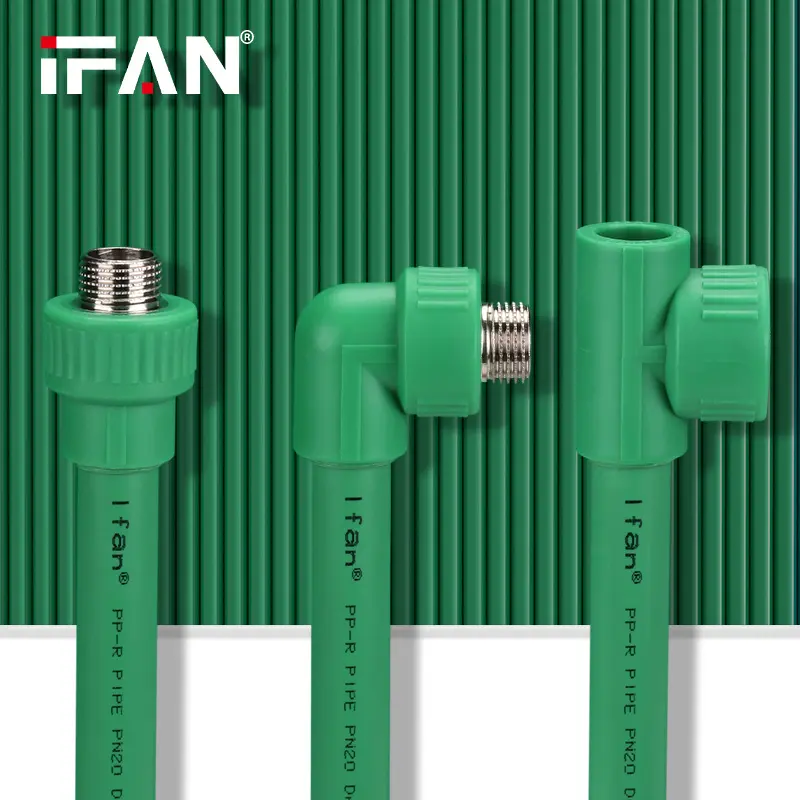PPR Fittings Manufacturing – How Factories Produce Quality Connections for Modern Plumbing
An Inside Look at Polypropylene Random Copolymer Fitting Production and Capabilities
As polypropylene random copolymer (PPR) grows as a preferred piping material, PPR fittings factories use advanced processes to produce the connectors essential for complete plumbing systems. This article explores PPR fitting manufacturing and how factories supply this vital component.IFAN factory with 30+ years of manufacturing experience supports color/size customization support free samples. Welcome to consult for catalog and free samples. This is our Facebook Website: www.facebook.com.

PPR Fitting Manufacturing Capabilities
Dedicated PPR fitting factories possess extensive capabilities to meet rising global demand. Their production assets include:
- High-output molding lines for mass PPR fitting production
- Computer-controlled machining centers for fabricated fittings
- Integrated resin processing and blending operations
- Comprehensive quality control testing procedures
- Large climate-controlled warehouses to stock finished fittings
- Loading docks and logistics infrastructure for distribution
By controlling the end-to-end PPR fitting production cycle, factories can optimize for quality, capabilities, and economies of scale. Strategic locations near key markets aim to provide “just-in-time” supply chains.
PPR Fitting Materials Processing
Fitting production starts with virgin PPR resin in pellet form. This raw material gets processed to prepare the feedstock:
- Sieving removes contaminants and fines from pellets
- Blending achieves precise PPR formulations and additives
- Drying eliminates moisture from the hygroscopic pellets
- Melting and filtering prepares homogeneous molten PPR
These steps maximize physical properties and performance characteristics of finished PPR fittings. The processed resin gets conveyed to molding machines or machining centers.
High-Volume PPR Fitting Molding
The majority of common PPR fittings get produced by large-scale injection molding. This automated process works by:
- Heated resin gets injected under pressure into multi-cavity molds.
- Molds rapidly cool and solidify the PPR into finished fitting shapes.
- Ejector pins remove completed fittings from molds.
- Automated pick-and-place packs fittings for downstream operations.
Computerized controllers precisely regulate pressures, temperatures, and cycle times for consistent production. Cavity designs allow forming complex fitting geometries to close tolerances.
Fabricated PPR Fitting Machining
For large or custom PPR fittings, computer numerical control (CNC) machining centers create components from PPR stock shapes. Programming allows fabricating fittings like:
- Large diameter headers and manifolds
- Multiport tees with high port counts
- Elbows and laterals in special radii
- Pump housings and hydraulic components
- Valve bodies and fluid control devices
CNC machining makes short work of cutting even robust PPR stock into precise, engineered fittings. It provides flexibility for custom manufacturing.
PPR Fitting Design and Engineering
In-house engineering teams support PPR fitting production through:
- 3D modeling of new fitting designs
- Flow analysis optimization using fluid dynamics
- Structural simulations assessing durability
- Mold design to optimize injection processes
- Programming CNC machining operations
- Continually improving manufacturing methods
These technical capabilities allow tailoring fittings for specific performance objectives spanning residential to industrial systems.
PPR Fitting Quality Control Testing
Stringent quality control validates performance expectations:
- Raw materials get tested to ensure purity and specifications
- Dimensional gauging during production maintains precision
- Wall thickness and inner contours get scanned optically
- Dye penetration checks identify any microscopic flaws
- Pressure testing confirms leak-tight integrity
- Pull-out force machines validate joint strength
- Sampling undergoes destructive hydrostatic testing
Broad quality control along with process optimization ensures finished PPR fittings meet both customer specifications and applicable codes.
PPR Fitting Inventory and Distribution
Warehousing capacity enables stocking a vast range of PPR fittings for rapid delivery. Distribution resources include:
- High-density shelving to efficiently organize SKUs
- Climate-controlled storage areas
- Cybersecurity measures to protect inventory data
- Fleet of delivery trucks for order fulfillment
- Logistics partners to serve diverse transportation needs
Sophisticated enterprise management systems track inventories and orders. This supports “just-in-time” supply chains to save costs while still meeting customer urgency.
The Importance of PPR Fittings Supply
From connecting straight pipe runs to integrating fixtures, PPR fittings serve indispensable functions enabling high-performance plumbing networks. Reliable fitting availability allows the realizing of PPR’s full benefits.
Strategically located PPR fitting factories with robust manufacturing and distribution capacities aim to provide ready supply even as global PPR demand accelerates. With quality certified at every step, fittings fulfill their vital role in next-generation plumbing systems.
IFAN
IFAN factory started in 1993. And IFAN has a workshop of 120000 square meters with 610 staff. IFAN can design and produce all plumbing pipe and fitting including PPR, PVC, CPVC PPSU HDPE PEXA PEXB PERT pipe and fitting, brass fitting, brass ball valve, heating system, gas system, sanitary faucets, and hose, In the past 30 years, IFAN has never forgotten his mission-To protect health and safety. And IFAN factory uses the best materials to produce high-quality pipe and fittings with an automatic production line and high-tech quality control machines.

